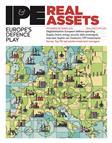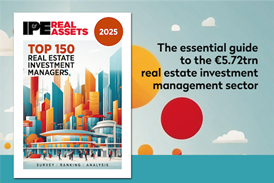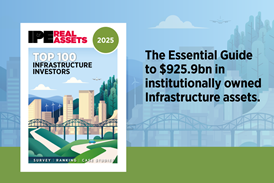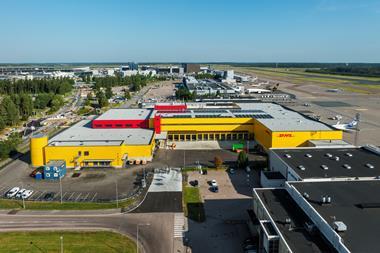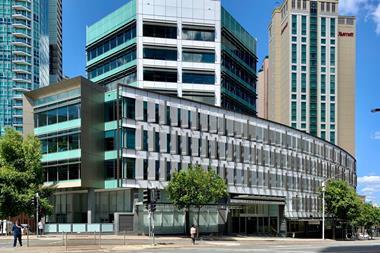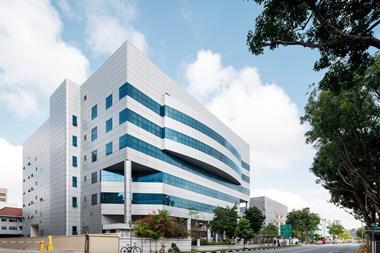More discerning travellers now seek accommodation that offers flexibility, thoughtful design and strong ESG credentials, writes Mak Hoe Kit
Urban living is experiencing a post-pandemic revival, driven by changing lifestyle demands, demographic shifts, and a growing emphasis on sustainability.

At the heart of this transformation are serviced apartments, - reshaping how people live, work, and experience European cities. As a result, they are increasingly viewed by institutional investors as a strategic asset class, offering stable income, long-term growth prospects, and alignment with broader urban development objectives.
Demographic Tailwinds – the new urban travellers
As travel rebounds across Europe, especially in major gateway cities like London, Paris, and Amsterdam, travellers to these cities are becoming more discerning. They seek accommodation that blends flexibility, thoughtful design and strong environmental, social and governance (ESG) credentials.
This has fuelled the rise of “serviced living” - a residential sub-category which includes serviced apartments, co-living properties and aparthotels - catering to short- to long-stays and live-work-play hybrid lifestyles. These hybrid spaces not only meet modern lifestyle needs but also enable cities to unlock value in underutilised urban assets, revitalising the community.
More than just a solution for travellers, serviced apartments are redefining the city experience for a new wave of mobile professionals and long-stay guests. Business trips are now longer and less frequent, often blending work with leisure thus allowing travellers to make the most of their time abroad.
This growing cohort of globally mobile workers, also known as digital nomads, is driving demand for accommodation that is experiential, while offering the comfort of a residence and the convenience of hotel services.
Cities are evolving in line with these expectations. Globally, more than 60 countries now offer digital nomad visas and related programs recognising the trend toward semi-permanent relocation. Major European cities represent over half of the top 10 most visited cities worldwide for digital nomads, including London, Berlin, Lisbon, Paris, Barcelona and Amsterdam.
Traditionally, short-term rentals have been the go-to solution for digital nomads. However, increasing regulations and restrictions are limiting their availability and affordability. As a result, serviced apartments and co-living spaces are increasingly being recognised as more sustainable, community-oriented alternatives.
Though co-living properties remain the smallest segment in the European living sector, it has doubled in size over the past five years, driven by specialist developers and operators focused on experiential-led design and shared social amenities.
Adaptive reuse – combining sustainability with capital efficiency
This evolution is prompting cities to rethink how they use space. To revitalise outdated buildings and optimise land use - particularly in heritage or supply-constrained areas - many are embracing adaptive reuse. The conversion of these assets to serviced apartments are central to this strategy, breathing new life into tired offices, outdated hotels, and overlooked plots.
Refurbishment offers a practical, timely and environmentally responsible path to bring obsolete properties in line with modern expectations, reducing embodied carbon footprint and speeding up delivery, often at a lower cost compared to a new build.
For institutional investors, this presents a compelling opportunity: to swiftly convert underperforming real estate into high-quality, ESG-aligned accommodation that supports both urban regeneration and financial returns.
Crucially, this also aligns with the growing imperative around ESG. With the drive for ESG adoption across Europe - reinforced by the EU Taxonomy and evolving stakeholder expectations - refurbishing existing stock is no longer optional; it is essential.
An example is Citadines Canal Amsterdam in The Netherlands. Originally a heritage building constructed in 1969, the property is located within Amsterdam’s Canal District; a tightly regulated conservation area with a moratorium on the development of new hotels.
To meet contemporary hospitality standards while honouring the building’s heritage, the historic façade has been carefully preserved. Inside, adaptive reuse has enabled improvements in operational efficiency and guest experience, resulting in elegantly designed apartments with integrated kitchenettes and modern, energy-efficient M&E systems. The outcome is an ESG-certified serviced apartment that aligns with both municipal objectives and market demand.
In France, lyf Gambetta Paris was converted from a former printing house into a dynamic co-living space designed for next-generation travellers and digital nomads.
Located in a vibrant arrondissement, the experiential-led social living property opened its doors in May 2025. It features community-driven amenities, flexible stay options, and a fresh identity that resonates with a younger demographic - all while preserving the site’s industrial heritage and meeting stringent environmental regulations.
These examples highlight how well-executed living assets can meet evolving lifestyle trends, unlock long-term value, and support sustainable urban growth.
Serviced apartments - delivering positive impact on returns and cities
More than just places to stay, serviced apartments offer opportunities for urban regeneration - delivering economic, environmental, and social returns. As cities seek to evolve responsibly, private capital has a key role to play in rejuvenating underutilised real estate and shaping the future of living.
For policymakers, planners, and investors alike, the message is clear: it’s time to look beyond traditional models and embrace this flexible, impactful asset class.
To read the latest IPE Real Assets magazine click here.

